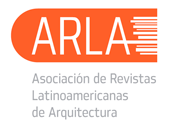TERRITORIAL RISK AND VULNERABILITY: PLANNING TOOLS AT MUNICIPAL SCALE
Resumen
ABSTRACT
The paper focuses on the link between territorial planning and risk management. Starting from the results of an interdisciplinary and international research called Quater-Interreg IIIB, we will underline the importance of territorial knowledge and the role that planning can play to mitigate risks such as floods, landslide and other natural and anthropical hazards. The aim of the research was a kind of certification that would help municipalities learn and operate on their territory. We worked to elaborate a method that can measure the short term and long term decision that public administration should take to turn a risky land into a secure territory. We worked to understand how territorial planning can mitigate the effect of hazard especially on the vulnerability components. Toscolano Maderno (Bs) and Seriate (Bg) are the two case studies in Italy that we will present here. Furthermore, we will introduce the Emergency Plans that we provided for these municipalities and the link that we made with the ordinary tools of planning. In fact we don’t think that it is necessary to introduce new tools, but we believe that the importance of knowledge of a territory can be integrated in ordinary planning tools, in accordance with the 12/2005 Act of the Lombardy Region (Italy), and be helpful in the phases of mitigation, prevention and response. An important role that planner can have is in the recovery phase, especially if we introduce the concept of building a resilience city.
RESUMEN
El artículo se centra en la relación entre ordenación del territorio y gestión del riesgo. A partir de los resultados de la investigación interdisciplinaria e internacional Quater-Interreg IIIB, se hace hincapié en la importancia de los conocimientos locales y el papel que puede desempeñar en la planificación de la reducción de los riesgos, como inundaciones, deslizamientos de tierra y otros desastres naturales como artificiales. El propósito de la investigación era elaborar una especie de certificación que pueda ayudar a los municipios a aprender y trabajar en su territorio. Se trabajó en desarrollar un método para medir las decisiones a corto plazo y largo plazo que el gobierno debería tomar a efectos de conseguir transformar un terreno peligroso en un territorio seguro. Se buscó entender cómo la planificación espacial es capaz de mitigar los efectos de peligro, especialmente en los componentes de la vulnerabilidad. Toscolano Maderno (Bs) y Seriate (BG) son los dos casos de estudio en Italia, que se presentan aquí, además de los planes de emergencia que se han desarrollado para estos municipios y la unión que hemos hecho con las herramientas ordinarias de planificación. En conclusión, no se cree necesario introducir nuevas herramientas, pero si señalar la importancia del conocimiento de un territorio que se puede integrar en los instrumentos de planificación, de conformidad con la Ley de Lombardía (Italia), 12/2005 y que puede ser útil en las fases de mitigación, preparación y respuesta a un evento. Un papel importante que el planificador puede tener es en la fase de recuperación, sobre todo si se introduce el concepto de la construcción de una ciudad resiliente.
Referencias
Burby, R. J. (1998) Cooperating with nature: confronting natural hazards with land use planning for sustainable communities. Washington, D.C: Joseph Henry Press.
Colucci, A., Lodrini, S., & Treu, Maria Cristina. (2004, September). “Territorial vulnerability analysis: The methodological framework”. In: Risk analysis IV, Southampton, Boston. Ed. C.A. Brebbia, WIT Press, 27-29,753.
Colucci, A., Samakovlija, M. & Treu, M. C. (2005, September). “Territorial vulnerability and local risks”. In: Sustainable development and planning II, Southampton, Boston. Eds. A.G. Kungolos, C.A. Brebbia & E. Beriatos, WIT Press, 12-14, 1261.
FEMA (1998). Project impact: building a disaster resistant community. Washington, D.C: Federal Emergency Management Agency.
Johnson, L. Dwelley, L. S. & AICP. (2005) Planning for the unexpected: land-use development and risk. Chicago, IL. American Planning Association.
Kreimer, A. (2003). Building Safer Cities: The Future of Disaster Risk. Washington, D.C. World Bank.
Pergalani, F. & Petrini, V. (2005, September). “Seismic and landslide risk analysis at Toscolano Maderno”. In: Sustainable development and planning II, Southampton, Boston. Eds. A.G. Kungolos, C.A. Brebbia & E. Beriatos, WIT Press, 12-14,1239.
Samakovlija, M., Magoni, M. & Treu, M. C. (2004, September). “Territorial vulnerability analysis: The case studies”. In: Risk analysis IV, Southampton, Boston. Ed. C.A. Brebbia, WIT Press, 27-29, 783.
Treu, M. C. (2003). “Politiche e gestione del suolo. I fattori ambientali, territoriali e tecnici nella pianificazione di situazioni sensibili e di aree a rischio”. In: Territorio, Milano. Dipartimento di Architettura e Pianificazione, Politecnico di Milano, 25, 9-17.
Wheeler, S. (2004). Planning for sustainability: creating livable, equitable, and ecological communities. London; New York. Routledge.







